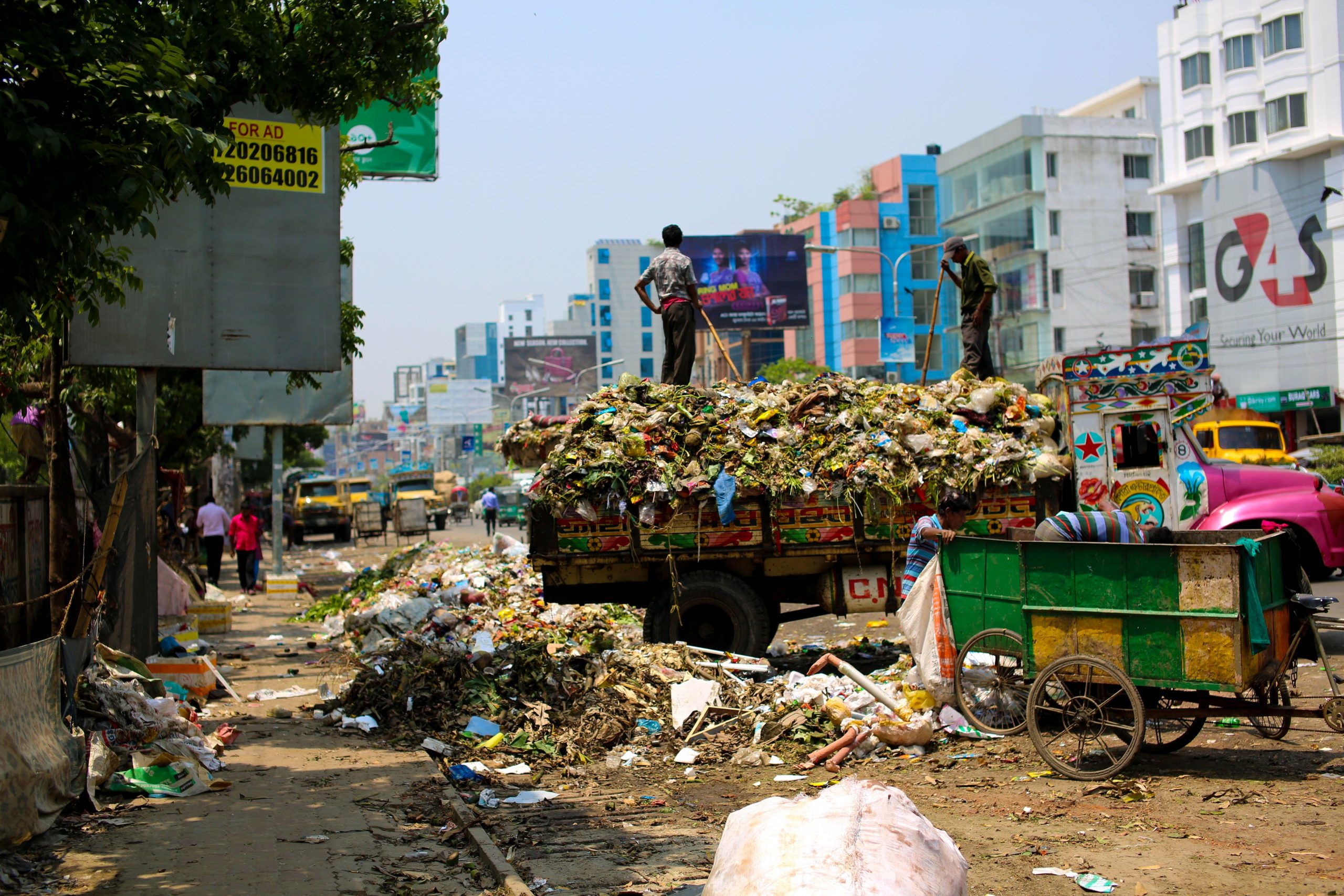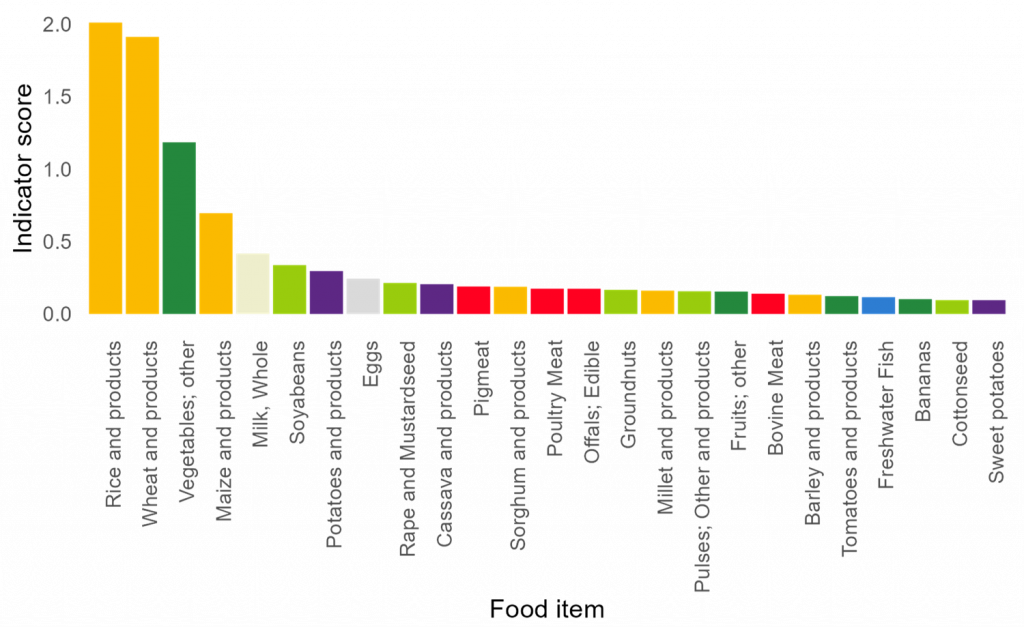
15 Jan Tackling global food waste for better nutrition
Food losses and waste (FLW) are gaining increasing attention worldwide, but there are still gaps in our knowledge. How much food is currently lost and wasted? Which foods are wasted most? How does that impact nutrition? Addressing these questions can help with reducing FLW and increasing the availability of food. Previous SNippets discussed nutrient losses in food waste, but how comparable are different estimates of food and nutrient waste? In this Thought for Food, we dive deeper into the barriers of not having comparable numbers.
A key element of a sustainable food system is its ability to ensure food security and deliver adequate nutrition for the world population. Currently, the global food system is not doing well in this regard, with one-third of the world population experiencing food insecurity, 9.2% of the population being undernourished (735 million people), and 69% of women of reproductive age (18-49 years) (1.2 billion individuals) having at least one micronutrient deficiency. One of the factors that influences the availability of food and nutrients is the amount of food that gets lost and wasted along the food supply chain.
In 2011, the Food and Agricultural Organisation (FAO) estimated that one-third of all global food production is wasted. After this publication, other studies tried to estimate FLW at regional, national and sub-national level, and mostly in high-income countries. Estimates vary greatly between studies, ranging from 6 to 531 kg per person per year. In 2021, two global reports indicated that almost 40% of all food produced is lost or wasted: 8% is lost on the farm, 14% between farm gate and retail/consumption stage and 17% is wasted at retail, food service and households.
An important factor affecting the amount of FLW is income. FLW increases when the national income of a country rises, especially when looking at food waste at consumption. On the other hand, most losses during earlier stages of the food supply chain seem to occur in low- and middle-income countries, for example due to poor storage facilities and lack of infrastructure. It seems that the level of income influences where in the supply chain most food losses and waste occur.
Many studies report FLW estimates in terms of total mass rather than a percentage of food production or per food group. Total mass of FLW does not give any information on which food groups are wasted most, and does not tell us where in the food supply chain most losses occur. From a nutrition perspective, this information is relevant as it indicates what food groups or stages of the food supply chain to target with interventions, so that food waste can be reduced, and more food is available for consumption. The FAO 2011 report offers estimates of FLW as percentages of production and per food group, and is therefore, despite being over a decade old, still widely used in recent studies.
Influence of definitions and methodologies on FLW estimates
The estimates of FLW are influenced by what is meant by food waste and how it is measured. There is no universal definition of food losses and waste, and the terms ‘food loss’, ‘food waste’ and ‘food loss and waste’ are often used interchangeably. Differences in definitions make it hard to compare data on food losses and waste.
Ways of measuring FLW can be split into direct methods (such as weighing, diary keeping, surveys) and indirect methods that rely on secondary data (e.g., modelling). The choice of method influences the estimation of FLW. For example, a study in Switzerland showed that the estimation of household food waste per capita with self-reported surveys was ten times lower than estimations based on calculations from a national waste composition analysis report. The study argued that the latter calculation was more objective. However, another study found that direct methods gave more accurate results, while indirect methods overestimated the amount of food waste.
The quality of the data related to FLW varies between studies. More small-scale studies using direct measurement methods have been done in recent years, but still data on a global level is limited because of the high costs involved. Consequently, global research relies on secondary data, resulting in outdated food waste estimates and large gaps in national estimates. Often, the same few studies are referenced, such as the FAO 2011 report, which carry a high level of uncertainty and are based on numerous assumptions, and therefore are not the most reliable sources.
Differences in the definition, measurement method and quality of the data make it difficult to compare estimates. Standards have been created to increase the quality of studies, by providing guidelines to measure FLW. Standardised measurement methods can help to compare the estimates of FLW between countries or regions and can help to show where in the supply chain most food losses occur, which can help to develop interventions to reduce food waste. Regional and national standards have been implemented in the European Union, Mexico and the United States.
Nutrient losses in food waste
The increase in FLW worldwide also means that nutrients are increasingly lost. While calorie or protein losses have been well-documented, this overlooks the loss of micronutrients, which are essential for the functioning of our body.
Estimations of nutritional losses differ largely between studies and countries. Nutrient losses in terms of mass are difficult to interpret, so often they are represented as a percentage of an individual’s or a population’s target intake. The DELTA Model® identified that for the nutrients cystine, histidine, methionine, phosphorus, thiamin and tryptophan more than 50% of the target intake is wasted.
It is not only interesting to know which nutrients are wasted most, but also what foods play the biggest part in that nutrient waste. Some food groups contribute more to nutritional losses than others. Foods can be minimally wasted in terms of mass, but still contribute considerably to nutrient waste. Examples are meat and dairy products: although only a small percentage of what is produced is wasted, their nutrient density means this is still quite high nutrient waste. For instance, meat, poultry, and fish contribute large proportions to losses of vitamin B12 (50% of total wasted), zinc (47%), protein (46%), niacin (42%) and vitamin B6 (42%). Similarly, iron is mostly wasted through cereals (49%) and vegetables (22%), and nearly all vitamin C and K is wasted through fruits and vegetables. Loss of calcium is primarily due to dairy waste (72%).
Now that key foods contributing to wastage of individual nutrients have been identified, it is worth exploring which foods play a major role in overall nutrient waste. With use of the DELTA Model®, we developed an indicator combining extent of FLW for each food item, along with their nutrient composition, and found that the food items that contribute most to overall nutrient waste are rice, wheat, vegetables, maize and milk. This information can help to develop strategies to reduce food and nutrient waste.

While the estimation of total FLW and the amount of the wasted nutrients vary widely across studies, there is a general agreement on the food groups that contribute most to nutrient waste. The differences in the estimations of total FLW show the importance of a standardized approach to assess nutrient losses, including micronutrients. In a world where malnutrition and diet-related health issues are widespread, minimising food waste can contribute to meeting nutritional requirements as part of a sustainable food system and help ensure that the available food resources are used to meet the nutritional needs of the global population. Addressing contributions of different food groups to nutrient losses is crucial for developing strategies aimed at reducing these losses and improving global nutrition.





